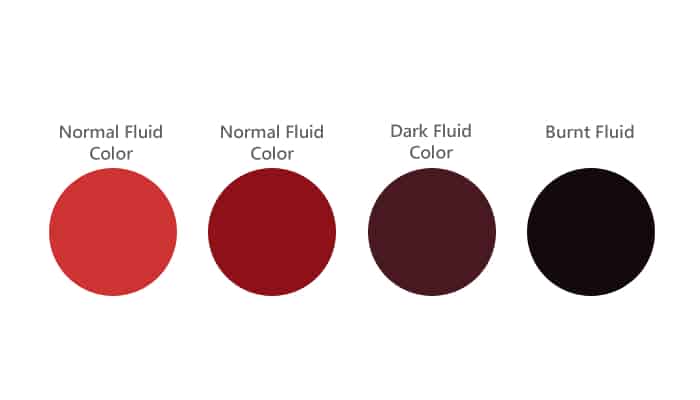Understanding Transmission Fluid for Your Acura ILX
When it comes to maintaining your 2016 Acura ILX, one of the most critical aspects is ensuring that you use the right transmission fluid. This isn’t just a matter of preference; using the correct fluid is essential for the longevity and performance of your vehicle’s transmission system.
Manufacturer’s Recommendations
| Popular posts |
|---|
| What to do to prolong the life of your manual gearbox |
| Automatic transmission: what it is, how it works |
The manufacturer specifies that the 2016 Acura ILX requires Honda ATF DW-1 transmission fluid. This fluid is specially formulated to meet the unique demands of Honda and Acura automatic transmissions. Using the correct type of fluid is crucial for several reasons:
Performance
– Smooth Operation: Honda ATF DW-1 is designed to provide optimal lubrication and cooling for your transmission, ensuring smooth gear shifts and overall performance.
– Temperature Stability: This fluid maintains its viscosity across a range of temperatures, which is vital for consistent performance, especially in varying driving conditions.
Protection
– Wear Resistance: The specific additives in Honda ATF DW-1 help reduce wear on internal components, extending the life of your transmission.
– Corrosion Prevention: This fluid also contains anti-corrosive properties that protect metal surfaces from rust and degradation.
Fluid Specifications
Understanding the specifications of Honda ATF DW-1 can help you make informed decisions about your vehicle maintenance. Here are some key specifications to consider:
- Viscosity Index: The viscosity index is crucial for ensuring that the fluid performs well under different temperature conditions. Honda ATF DW-1 has a high viscosity index, which means it maintains its thickness and lubricating properties even when hot.
- Friction Characteristics: This fluid is engineered to provide the right amount of friction for smooth shifting without causing slippage.
- Compatibility: Honda ATF DW-1 is compatible with other Honda and Acura models, but it’s essential to avoid mixing it with other brands or types of transmission fluid.
Why You Shouldn’t Use Just Any Fluid
You might be tempted to use a generic transmission fluid or a different brand, but this can lead to serious issues. Here’s why sticking to Honda ATF DW-1 is non-negotiable:
- Warranty Concerns: Using the wrong fluid can void your warranty. If something goes wrong with your transmission, the manufacturer may refuse to cover repairs.
- Performance Issues: Generic fluids may not have the same properties as Honda ATF DW-1, leading to poor shifting performance and potential transmission failure.
- Costly Repairs: A malfunctioning transmission can lead to expensive repairs. Using the right fluid is a small investment that can save you a lot in the long run.
In summary, using Honda ATF DW-1 transmission fluid is not just a recommendation; it’s a necessity for maintaining the performance and longevity of your 2016 Acura ILX. Always prioritize manufacturer specifications to keep your vehicle running smoothly.
Recommended Oil Brands for Your Acura ILX Transmission
When it comes to maintaining your 2016 Acura ILX, using the right transmission fluid is crucial. While Honda ATF DW-1 is the manufacturer’s recommendation, many owners have shared their experiences with various brands that meet or exceed these specifications. Here’s a rundown of some popular oil brands that Acura ILX owners have found reliable based on forum discussions and owner feedback.
Honda Genuine ATF DW-1
It’s no surprise that the top recommendation from most owners is Honda Genuine ATF DW-1. This is the fluid specifically designed for your vehicle, and many users swear by it for optimal performance.
- Pros:
- Perfectly matched to the specifications of the Acura ILX.
- Proven track record of reliability and performance.
- Widely available at Honda dealerships and online.
- Cons:
- Can be more expensive than generic alternatives.
Valvoline MaxLife Multi-Vehicle ATF
Another popular choice among Acura ILX owners is Valvoline MaxLife Multi-Vehicle ATF. This fluid is designed for a wide range of vehicles, including those requiring Honda ATF DW-1.
- Pros:
- Good performance in various temperature ranges.
- Offers excellent protection against wear and tear.
- Often available at a lower price point compared to Honda Genuine fluid.
- Cons:
- Some users report mixed experiences in terms of shifting smoothness.
Castrol Transmax Import Multi-Vehicle ATF
Castrol is another brand that has received positive feedback from Acura ILX owners. The Transmax Import Multi-Vehicle ATF is formulated to meet the needs of many import vehicles, including Honda and Acura.
- Pros:
- Good overall performance and shifting quality.
- Compatible with a wide range of vehicles.
- Generally well-priced compared to OEM options.
- Cons:
- Some users have reported that it may not perform as well in extreme temperatures.
Royal Purple Max ATF
Royal Purple is known for its high-performance oils, and their Max ATF is no exception. This fluid is designed to provide superior protection and performance.
- Pros:
- High-quality synthetic formulation for enhanced performance.
- Excellent protection against wear and thermal breakdown.
- Many users report improved shifting and responsiveness.
- Cons:
- Typically more expensive than other options.
Mobil 1 Synthetic LV ATF HP
Mobil 1 is another trusted name in the automotive industry, and their Synthetic LV ATF HP is designed for high-performance applications, making it a viable option for Acura ILX owners.
- Pros:
- Excellent thermal stability and oxidation resistance.
- Provides smooth shifting and improved fuel efficiency.
- Widely available at many auto parts stores.
- Cons:
- Some users have noted it may not be as effective in older transmissions.
Owner Feedback and Experiences
Many Acura ILX owners have shared their experiences on forums, providing valuable insights into which brands work best. Here are some common themes:
- Performance: Most owners agree that using Honda Genuine ATF DW-1 yields the best performance, particularly in terms of shifting smoothness and overall reliability.
- Cost vs. Quality: While many are willing to pay a premium for Honda Genuine fluid, others have found satisfactory results with Valvoline and Castrol, especially for those on a budget.
- Longevity: Users who have switched to synthetic options like Royal Purple and Mobil 1 report longer intervals between fluid changes and improved performance over time.
In summary, while Honda ATF DW-1 is the go-to recommendation for your Acura ILX, there are several other brands that owners have found to be reliable alternatives. Always consider your driving conditions, budget, and personal preferences when choosing the right transmission fluid for your vehicle.
Change Interval for Your Acura ILX Transmission Fluid
Maintaining your 2016 Acura ILX involves regular checks and changes of the transmission fluid. Understanding the recommended change interval is crucial for keeping your vehicle running smoothly.
Recommended Change Interval
For the 2016 Acura ILX, the manufacturer typically recommends changing the transmission fluid every 60,000 miles (approximately 96,000 kilometers) under normal driving conditions. However, if you frequently drive in severe conditions—such as heavy traffic, extreme temperatures, or towing—consider changing the fluid more frequently, around every 30,000 to 45,000 miles (48,000 to 72,000 kilometers).
Why Change Intervals Matter
Changing your transmission fluid at the recommended intervals is essential for several reasons:
- Fluid Degradation: Over time, transmission fluid can break down due to heat and contamination. This degradation can lead to poor performance and increased wear on transmission components.
- Contaminants: As the fluid circulates, it picks up debris and metal shavings from the transmission. Regular changes help remove these contaminants, preventing damage to internal parts.
- Optimal Performance: Fresh fluid ensures that the transmission operates smoothly, providing better shifting performance and fuel efficiency.
Partial Transmission Oil Changes
In many cases, a full transmission fluid change is not feasible without removing the transmission from the vehicle. This is due to the design of many modern automatic transmissions, which often do not have a drain plug. As a result, many owners opt for partial fluid changes instead.
What is a Partial Fluid Change?
A partial fluid change involves draining a portion of the old fluid and replacing it with new fluid. This method can help refresh the fluid without the need for a complete removal of the transmission.
Benefits of Partial Changes
- Cost-Effective: Partial changes are generally less expensive than full fluid changes, as they require less labor and time.
- Improved Fluid Quality: Even a partial change can significantly improve the quality of the transmission fluid, helping to reduce wear and improve performance.
- Less Downtime: Since partial changes can often be performed more quickly, your vehicle spends less time in the shop.
Considerations for Partial Changes
While partial changes can be beneficial, there are some important considerations:
- Fluid Mixing: If you switch brands or types of fluid during a partial change, be cautious. Mixing different types of transmission fluids can lead to compatibility issues.
- Frequency: Partial changes should be done more frequently than full changes. Consider doing a partial change every 15,000 to 30,000 miles (24,000 to 48,000 kilometers) to maintain fluid quality.
- Not a Complete Solution: While partial changes help, they do not replace the need for a full fluid change eventually. Over time, contaminants will still build up in the system.
Statistical Data and Authoritative Sources
According to the American Transmission Rebuilders Association (ATRA), regular maintenance, including fluid changes, can significantly extend the life of your transmission. They report that nearly 90% of transmission failures are due to overheating and fluid contamination, both of which can be mitigated by adhering to recommended change intervals.
Additionally, a study published in the Journal of Automotive Engineering found that vehicles that underwent regular fluid changes experienced 30% fewer transmission-related issues compared to those that did not. This data underscores the importance of maintaining your transmission fluid, whether through full or partial changes.
By staying on top of your transmission fluid maintenance, you can help ensure that your Acura ILX continues to perform at its best for years to come.
What Color Should Transmission Fluid Be?


